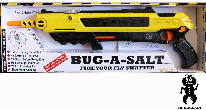Using deer fencing can be the perfect way to help keep deer out of your yard, garden, or simply your property. However, if you are thinking of hiring some one to install it for you, why bother? All you need to do is send an after noon, and you will be able to get the fence itself in. Any other work you may want to do (such as beautification) can be done at your leisure over time. The nice thing about using deer fencing is that it can also help give your home an added element of privacy.
Materials needed:
- Fencing material (eight feet in height)
- Tape measure
- Pen and paper
- 12 foot posts
- Hooked ground stakes
- Wire
- Shrubs, or other foliage (optional)
Prodcedure:
- Take some measurements. Before you can begin using deer fencing, you need to choose where it will go, and get some measurements. Either with the help of a friend, or by yourself, measure out the distances that you will be covering, and then write them down. Add up the total of these measurements, and then add an additional 10 to 15 percent so that you have room for error.
- Choose the material. Go to your local home improvement store, and take a look at the different fencing materials that they have. You will want to choose a material that is strong, durable, and resistant to ultraviolet light since it will be outside. While you can always go with the traditional chain link fence (which is usually one of the cheaper options) you don't have to. Purchase enough materials to complete your fencing job, and be sure that you remember that the fencing material will need to be eight feet high.
- Draw out the plans. If you haven't already, begin drawing out the plans for your new fence. This will help you determine exactly where everything needs to go, and allow you to double check that you have enough materials for the project. If you have any trees on your property, you may want to keep them on the inside of your fence, so plan accordingly. Mark out clearly where you want each and every post to go (average about every 15 to 20 feet).
- Begin sinking posts. Begin sinking the posts into the ground every 15 to 20 feet. As you sink them into the ground, make sure that you are sinking about two to three feet into the ground to help secure it properly. You may also want to pour concrete around the post to help hold it in place and prevent it from leaning.
- Begin installing fencing. Install the fencing according the instructions of the manufacturer. Each type of fencing is put up in a different manner, and the direction should be followed closely to ensure that there are no problems later on in the life of the fence.
- Place the stakes. If you have a gap at the bottom of the fence, be sure that you place some hooked ground stakes along the fence every five feet. This is to help prevent deer from getting under the fence and into your yard.
- Beautify as you want. Now that you have your fence installed, you can beautify it as much or as little as you want. Simply place some shrubs, or other types of foliage, along the perimeter o the fence. This can be done on both the exterior and interior areas of the fence.
Author Bio
Lee Wyatt
Contributor of numerous Tips.Net articles, Lee Wyatt is quickly becoming a regular "Jack of all trades." He is currently an independent contractor specializing in writing and editing. Contact him today for all of your writing and editing needs! Click here to contact. Learn more about Lee...
Spot Cleaning Leather Sofas
Leather sofas, chairs, and other furniture have become increasingly popular over the years. In fact, you can't really go ...
Discover More
Getting Rid of Morning Glory
While some people absolutely love the look and smell of Morning Glory, there are just as many people who view it as an ...
Discover More
Divine Deviled Eggs
Deviled eggs are a great treat that you and your family can enjoy year round. In fact, when made properly, deviled eggs ...
Discover More
Managing Lawn Pests
If you are really interested in having a beautiful and healthy lawn it only stands to reason you will want to reduce as ...
Discover More
Preventing Flower Garden Pests
No garden is exempt from pests. Being proactive can reduce the damage and restore a healthy flower garden.
Discover More
Identifying Common Lawn Pests
The key to having a healthy lawn are to identify pests early and take action. No lawn is resistant to insects; ...
Discover More

Comments